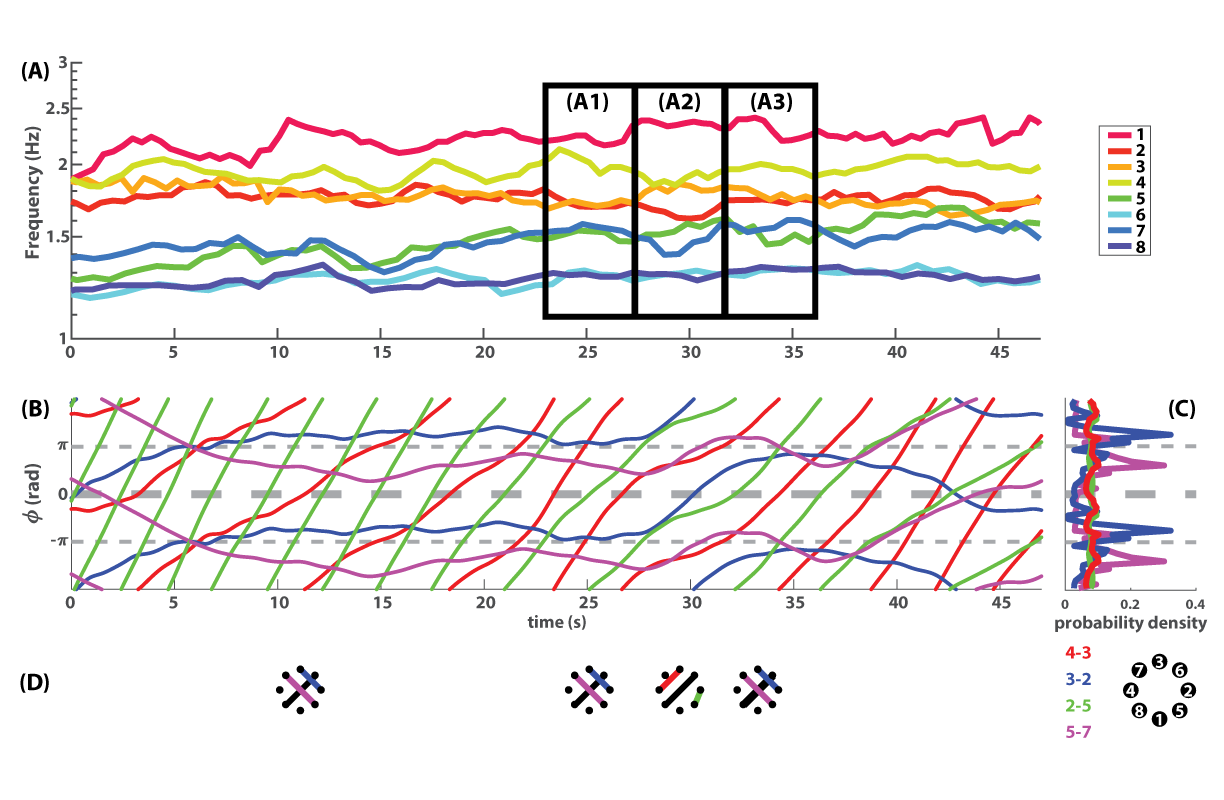Mengsen Zhang, Ph.D.
complex systems and brain sciences
Project maintained by mengsenz Hosted on GitHub Pages — Theme by mattgraham
Multiagent social coordination
A lot of works on coordination phenomena focus on either systems of very few (often 2) or very many component (better to be infinite). The in-between was somewhat neglected. To understand coordination dynamics across scales, I felt necessary to bridge this gap between the very few and very many by studying the middle. I have developped a new experimental paradigm (+ an aparatus) to study the coordination of rhythmic tapping among eight humans in a controlled environment - network connectivity and individuals’ frequency of movement can be systematically manipulated.
We have recently published a paper (here) about the first experiment using this paradigm, dubbed the “Human Firefly” experiment (because people’s taps were displayed as flashes of LEDs, which looked like glowing fireflies in the dark). At micro level (interpersonal relations), we identified what phase relations people coordinated in (metastably, i.e. people come together and separate recurrently); at macro level (intergroup relations), we identified the critical level of frequency diversity that led to segregation between frequency groups.

Following the experiment, we have developped a mathematical model which successfully captured these key observations. The model provided dynamic explanations for some of the statistical features in the experimental data. It also connects existing small-scale and large-scale phenomena and theories of biological coordination. A preprint can be found here.
Along the way, I have also done some exploratory work on how to find phase transitions in complex coordination patterns in, for a start, eight-person coordination. This is when I came across Computational Topology (homology in particular), which later led to the discovery of a transition between isomorphic graphs in the figure above (A1 to A2 to A3, corresponding to graphs in D). A proof-of-concept paper is in the final stage of preparation.